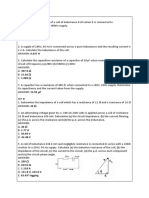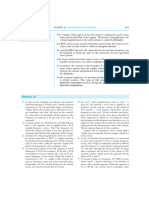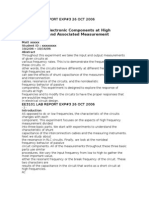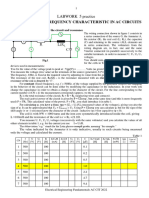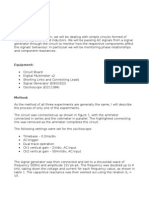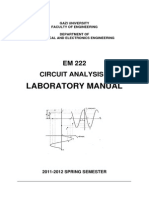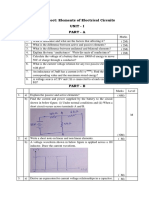0% found this document useful (0 votes)
61 views6 pagesEmc Chapter3 Module 3 4
This document discusses the high-frequency behavior of electrical components. It covers how the resistance, inductance, and capacitance of components vary with frequency and can cause them to behave differently than at DC. The exercises calculate the frequency-dependent resistance of different materials, inductance of wires and loops, and errors in measurements due to parasitic inductance and capacitance. An equivalent circuit is synthesized to represent a given impedance response.
Uploaded by
Manjushree PatilCopyright
© © All Rights Reserved
We take content rights seriously. If you suspect this is your content, claim it here.
Available Formats
Download as PDF, TXT or read online on Scribd
0% found this document useful (0 votes)
61 views6 pagesEmc Chapter3 Module 3 4
This document discusses the high-frequency behavior of electrical components. It covers how the resistance, inductance, and capacitance of components vary with frequency and can cause them to behave differently than at DC. The exercises calculate the frequency-dependent resistance of different materials, inductance of wires and loops, and errors in measurements due to parasitic inductance and capacitance. An equivalent circuit is synthesized to represent a given impedance response.
Uploaded by
Manjushree PatilCopyright
© © All Rights Reserved
We take content rights seriously. If you suspect this is your content, claim it here.
Available Formats
Download as PDF, TXT or read online on Scribd
/ 6








